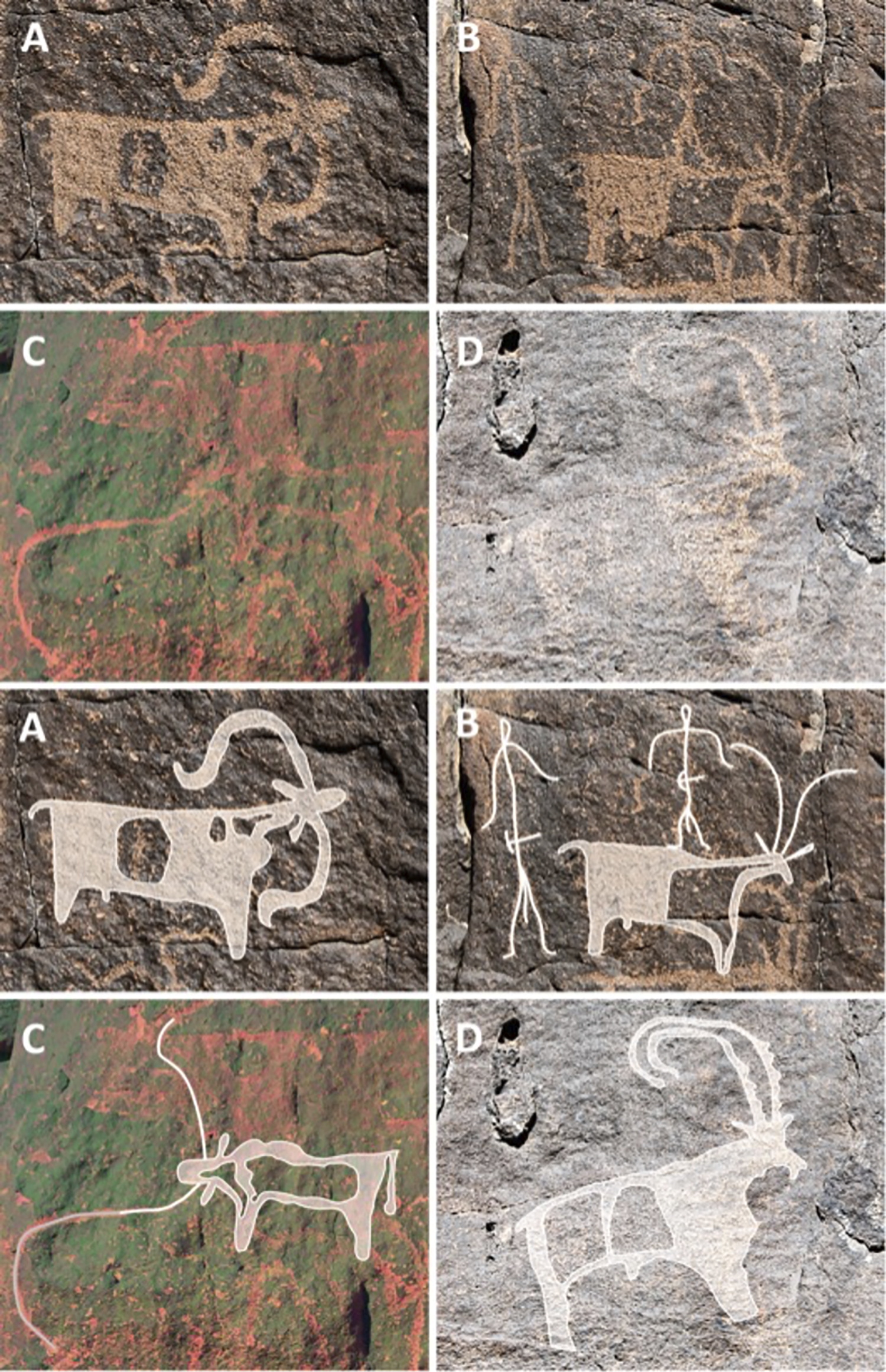
to shelter from fierce desert sun at least 7,000 years ago, new research reveals.
Lava tubes are caves left behind by underground lava flows – at one time, a river of lava rather through the rock, but as it drained away, it left a huge tunnel behind.
are among the first evidence of herding and agriculture in the region, say scientists.
The finds made inside a large lava tube called Umm Jirsan located in the volcanic field of Harrat Khaybar, around 80 miles north of Medina, show it provided ‘valuable shelter’ for humans herding sheep, goats and cattle for at least the past 7,000 years.
It has been difficult to establish the timing of early human occupations in the region and their connections with the nearby Levant remain poorly understood, mainly due to poor preservation of organic remains in such arid conditions.
To get around the problem, an international research team focused their investigations on caves and other underground settings where ancient materials are sheltered from the sun, wind and huge temperature variations.
What is a lava tube?
Study leader Doctor Mathew Stewart said: ‘Exploring Arabia’s hidden past, our study uncovers millennia of human occupation within and around the Umm Jirsan lava tube, shedding light on ancient lifestyles and adaptations to environmental change in this harsh desert environment.
‘Within the lava tube are artefacts, rock art, and skeletal remains that document repeated human occupation over at least the past 7,000 years.
‘The lava tube seems to have been an important resource for pastoralists keeping and herding livestock, as evidenced by rock art and animal bones representing domesticated sheep and goats.

‘Isotopic analysis of human remains reveals an increase over time in C3 plants such as cereal and fruit in the diet, possibly linked to a rise in oasis agriculture in the Bronze Age.’
The team concluded that Umm Jirsan was likely not a permanent home, but instead a valuable ‘stopping point’ for people traveling between oasis settlements.
Dr Stewart, of Griffith University, Australia, added: ‘Lava tubes and other natural shelters were valuable resources for communities surviving in a challenging environment, and with further investigation, they present a key source of archaeological information about the history of human occupation in Arabia.’
.
Vivid Bulletin's News Updates newsletter


Post a Comment
0Comments